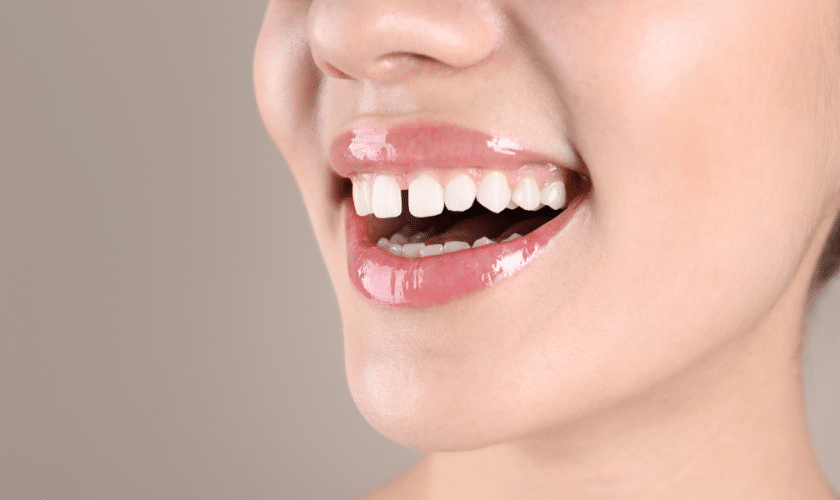A charming gap between the front teeth, known as diastema, is a unique dental characteristic for some. While it adds character to smiles, understanding the causes behind widely spaced teeth is essential.
1. Genetics and Hereditary Factors:
The most common cause of diastema is often genetic. Family traits play a significant role, and if parents or grandparents had spaced teeth, there’s a likelihood of it being passed down to subsequent generations.
2. Oversized Labial Frenum:
The labial frenum is the tissue that connects the upper lip to the gum. If it’s oversized or extends too far down between the two front teeth, it can create enough space to cause diastema.
3. Missing or Undersized Teeth:
When there’s a size discrepancy between teeth, particularly if some are undersized or missing, it can lead to gaps as the existing teeth may not fill the available space adequately.
4. Thumb-Sucking or Pacifier Use:
Extended thumb-sucking or prolonged pacifier use, especially in early childhood, can exert pressure on teeth, causing them to shift and create gaps.
5. Periodontal Disease:
Advanced gum disease can result in the weakening of the bone structure that supports teeth. This can lead to tooth movement, including the development of gaps.
6. Tongue Thrusting:
Habitual tongue thrusting, where the tongue pushes against the front teeth during swallowing or speaking, can contribute to the development or worsening of diastema.
7. Incorrect Swallowing Reflex:
An improper swallowing reflex, where the tongue pushes against the front teeth instead of the roof of the mouth, can exert force on the teeth, potentially leading to spacing issues.
8. Early Loss of Primary Teeth:
If primary (baby) teeth are lost prematurely without adequate space maintenance, it can affect the eruption pattern of permanent teeth, potentially leading to gaps.
9. Orthodontic Issues:
Certain orthodontic conditions, such as an incorrect ratio of tooth to jaw size or improper alignment, can contribute to the development of spaced teeth.
Treatment Options:
The approach to treating widely spaced teeth depends on the underlying cause. Orthodontic interventions, such as braces or aligners, are common for cosmetic concerns. In some cases, other treatments, like dental bonding or veneers, may be recommended.
Understanding the causes of widely spaced teeth allows for informed decisions about potential treatment options. Consulting with a dentist or orthodontist can provide personalized insights and guidance on the most suitable approach for achieving a confident, harmonious smile.


